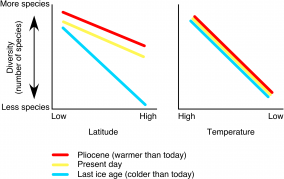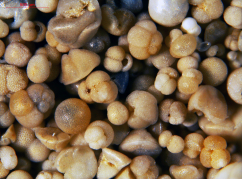Media
HKU Ecologist Discovers that Changes in Global Biodiversity Pattern Are Driven by Temperature and Climate
28 Jun 2012
Planet Earth shows striking latitudinal gradients in species richness and biodiversity with, typically, more species in tropical regions and fewer in polar regions. For instance, tropical rain forest contains many more species than forests further north, and coral reefs host many more species than artic oceans. Understanding to the causes, stability and potential changes through time of such latitudinal species gradients is limited. By studying fossil of plantonic marine animals from more than 200 sites covering the whole North Atlantic Ocean, and using it as a model system to reveal global patterns, the research team discovered that the quantitative relationship between diversity and latitude has been dynamic, but the diversity versus temperature relationship has remained remarkably constant throughout the past three million years. Dr. Yasuhara and his research team compared three time period of present day, last ice age (colder than today), and Pliocene (3 million years ago: warmer than today), and temperature differences among these periods are clearly reflected in diversity. In other words, warmer Pliocene had higher diversity and colder last ice age has lower diversity than the present day. Furthermore, the latitudinal temperature gradient was steeper during the last ice age than today because of polar regions were much cooler in the past than they are now and tropical regions were not much, and thus the latitudinal species diversity gradient was steeper. So, all of such changes over time are reasonably explained by the underlying constant biodiversity-temperature relationship (see Figure in attached press release). These results provide strongly evidence of that temperature controls biodiversity.
“Our results will largely advance our understanding on mechanisms controlling biodiversity. This is a very important topic in our rapidly changing world with serious concern on biodiversity conservation”, said Dr Yasuhara. It remains an open question as to whether these results will allow scientists to predict biodiversity changes in the future, since the rates of global warming and temperature rises are beyond those seen in the last three million years. However, the findings certainly indicate that biodiversity will change in response to temperature, and these temperatures beyond the historic ranges may well result in substantial reorganization of global pattern of biodiversity.
Please refer to the attached press release for more information, or visit:
http://onlinelibrary.wiley.com/journal/10.1111/(ISSN)1461-0248
For photos, please visit:
http://www.scifac.hku.hk/news/media?page=1
For press enquiry, please contact Ms Cindy Chan, Communication Manager of Faculty of Science, at 2241-5286/ 6703- 0212 or by email at cindycst@hku.hk; or Dr Moriaki Yasuhara, Assistant Professor of School of Biological Sciences at yasuhara@hku.hk
Figure 1 is a simplified graph to explain latitude-biodiversity (left) and temperature-biodiversity (right) relationships. Note large differences of the latitudinal diversity patterns
among the three time slices of present day (orange), last ice age (18,000 years ago, a period colder than today: blue), and 3 million years ago (Pliocene, a period warmer than
today: green), and remarkable similarity of the temperature-diversity patterns. Temperature-diversity lines of three time slices are almost completely overlapped, suggesting
strong and constant temperature control of biodiversity.
Image


